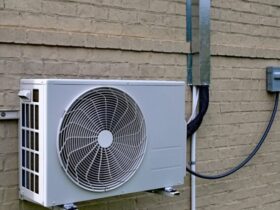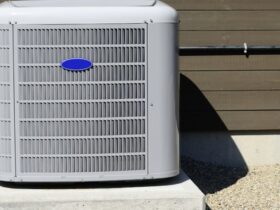Indoor air quality is something that doesn’t often get a lot of attention, but it’s important to understand how big of an impact this can have on your health. Our homes are filled with all sorts of chemicals and toxins from cleaning products, paint, furniture, carpeting and more. We spend so much time indoors that the quality of our indoor air can really make or break our day. Keep reading for some tips on improving the quality of your indoor air!
What is indoor air quality?
Yes, there is a significant difference between outdoor and indoor air quality. Unfortunately, as much money and effort are spent on improving outdoor air quality, the health impacts of improved outdoor air quality are often overshadowed by adverse effects of indoor air pollution. Indoor pollutants like radon gas can be two to four times higher than that found outdoors. The levels of air pollutants in office buildings, schools and even homes can be many times higher than what is considered acceptable. This makes the need for indoor air quality improvement imperative.
The importance of having good indoor air quality.
Indoor air pollution is just as damaging as outdoor air pollution, if not more. In fact, according to the 2009 data from the United States Environmental Protection Agency (EPA), indoor pollutants can be two to four times higher than outdoors in some homes and offices. Some of the possible health impacts of bad indoor air quality are:
– Respiratory problems
– Headaches and fatigue
– Irritated eyes, nose, throat and lungs
– Allergic reactions like sneezing and nasal congestion.
How to measure indoor air quality?
The most common ways to measure if there is an urgent need to improve your indoor air quality are:
– Changes in the appearance of your house or office
– Slight discoloration in ceilings, walls and carpets
– Dampness, mustiness and mould on surfaces like walls, floors and ceiling. – Persistent bad odors
– Constant headaches and fatigue that doesn’t go away despite adequate rest.
Types of indoor air pollutants:
There are two types of indoor air pollutants – particulate matter and gases. Gases circulate in the form of airborne particles, which settle on surfaces and disperse with time. Particulate matter can cause a variety of health problems ranging from minor irritation to serious health conditions like lung cancer, asthma, and pulmonary diseases.
How to improve indoor air quality:
1. Ventilation –
Proper ventilation is a key factor in improving air quality in the home. Installing ceiling fans and room air conditioners is essential during summers, but they should be switched off when not in use. In winters, you can let fresh outdoor air circulate through your house by keeping windows open for at least an hour each day.
2. Regular Vacuuming-
Remove the dust from the floor and surfaces of your house with a regular vacuum cleaner at least once in a week to keep it dust free. Maintain proper ventilation while using vacuum cleaner as most of them don’t have air filters, which can add to indoor pollution levels. Make sure you get rid of the dust bag after each use as it may contain some of the pollutants.
3. Change your furnace filter-
Change the regular furnace filters every 3 months or when they get clogged with dirt. Running a dirty gas filter for longer than recommended time can lead to increased levels of airborne contaminants, which in turn affects the air quality of your home.
4. Get professional help-
If you still notice that the condition of your home is deteriorating despite ventilating it well, cleaning it regularly and changing your filters regularly, get professional assistance. Professional heating and air companies in Atlanta will be able to identify sources of pollution like mold, mildew, or high radon levels in your home.
We hope this post has helped educate you on the importance of air quality and how it can affect your health. If you are living in an indoor air quality that is poor, get started now with measures!










